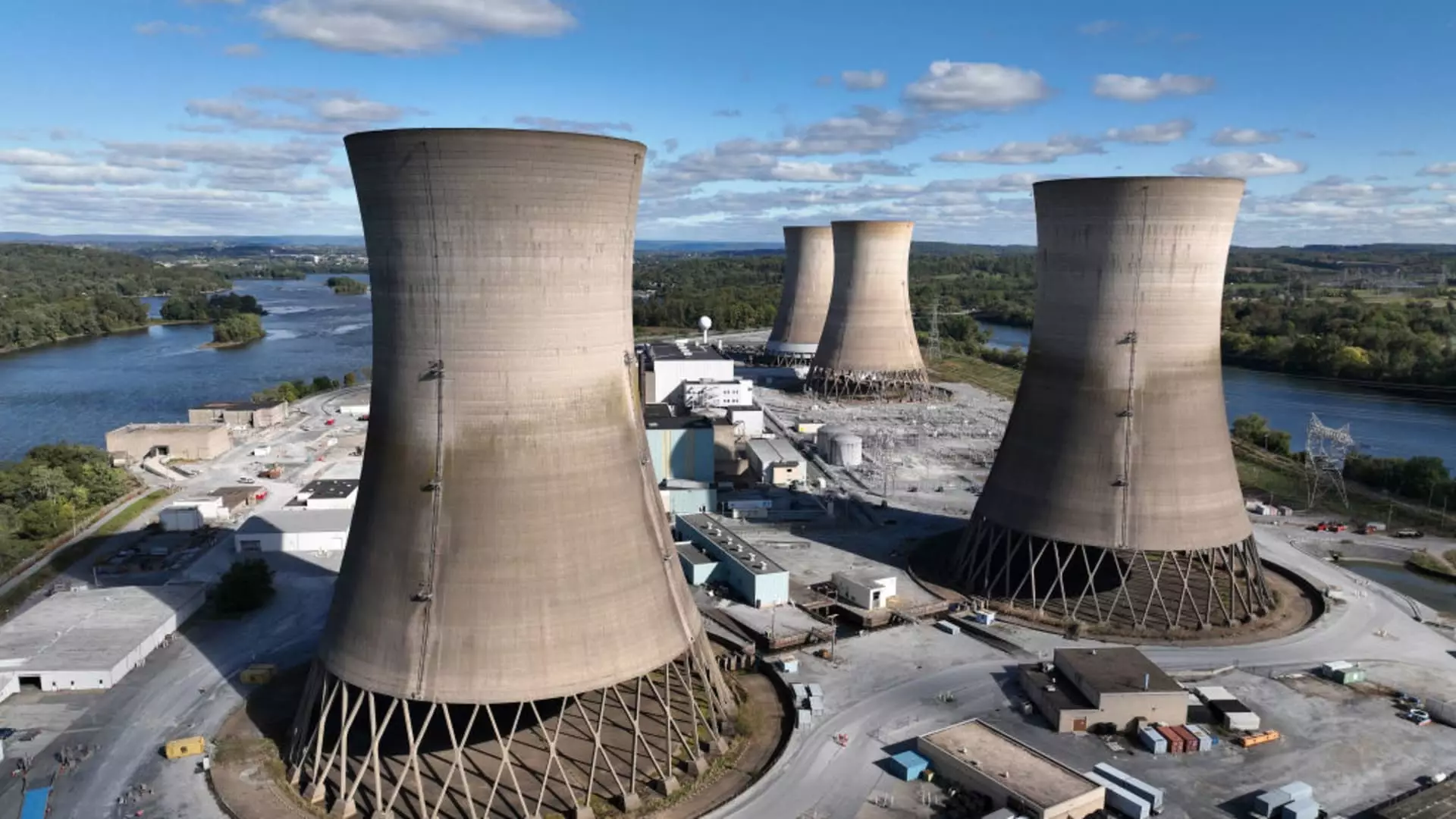The global energy landscape is evolving, propelled by the pressing demand for clean, reliable power sources, particularly in the tech sector. Among the most promising developments are Small Modular Reactors (SMRs)—compact nuclear energy solutions that could potentially transform the conventional view of nuclear power. Recently, significant investments from tech giants like Amazon and Google indicate a burgeoning enthusiasm for SMRs, suggesting a shift toward a more sustainable energy future.
Emerging Demand for Clean Energy
The acceleration of artificial intelligence and data storage has necessitated an unyielding demand for energy among companies in the tech industry. As these corporations strive to achieve sustainability mandates, there is a growing appetite for fossil-free power sources. The recent announcement that Amazon plans to invest over $500 million in advanced nuclear reactor projects is a pivotal development. Additionally, Google’s commitment to purchasing power generated by Kairos, a company specializing in the development of SMRs, marks a crucial turning point. Such engagements reveal that tech companies are not only interested in sustainable practices but also willing to financially back nuclear energy—a sector that has previously faced skepticism due to its cost and complexities.
Small Modular Reactors are not merely a response to environmental priorities; they present an economically viable alternative to traditional nuclear power. Historically, utilities have hesitated to invest in nuclear projects due to skyrocketing costs and the unpredictable financial implications of pioneering new technologies. However, the collaboration of tech players with advanced SMR developers has the potential to shift this dynamic. Morgan Stanley analysts project that the market for SMRs could expand significantly, ranging from two to five gigawatts in capacity by 2035, driven largely by tech companies. This could translate into a fleet of up to 17 reactors, provided each reactor has a typical output of 300 megawatts.
Investor Interest: Challenges and Opportunities
Despite the positive outlook surrounding SMRs, investor pathways remain convoluted. Currently, there are limited options for those looking to engage with SMR-focused companies. Pure-play entities like NuScale and Oklo offer some exposure, yet these stocks are characterized by volatility and uncertainty regarding their business trajectories. For instance, NuScale, though valued at $4.7 billion and having seen a significant price surge recently, has previously faced setbacks, including the cancellation of a planned project in Idaho due to escalating costs. Similarly, Oklo, aiming to deploy microreactors between 15 megawatts and 100 megawatts, is backed by influential figures but has its own hurdles to navigate in bringing its projects to fruition.
The Future of Nuclear Energy is Multifaceted
Meanwhile, companies like GE Vernova play a dual role within the SMR marketplace. While its primary focus lies in gas and wind energy solutions, it is also poised to make significant advancements in SMR technology. The upcoming construction of its BWRX-300 reactor in Ontario marks a crucial step forward, with the goal of commencing operations by 2029. However, GE Vernova acknowledges that the impact of SMRs on its overall profitability may not be realized until the early 2030s.
This nuanced landscape illustrates the varied and sometimes unpredictable paths that both investors and companies will navigate in the months and years to come. The occasional missteps of burgeoning firms underscore the importance of cautious optimism; the potential rewards of investing in clean energy must be weighed against the challenges inherent in nuclear projects.
As the world grapples with the escalating climate crisis, the burgeoning interest in SMRs by tech companies highlights a crucial intersection between sustainability and technological advancement. While the pathway to successfully deploying these reactors faces significant challenges, the recent influx of funding and support can catalyze promising developments. The vision of a reliable, carbon-free energy future appears more tangible than ever.
The collaboration between tech giants and nuclear innovators signals not only a change in thinking about nuclear energy but also presents an opportunity for reshaping the entire energy supply chain. As SMRs potentially become a cornerstone of the energy grid, they signify a hopeful trajectory in the quest for a sustainable, efficient, and resilient energy future. With the right investments, innovations, and regulatory frameworks, the next decade could mark a transformative era in the way society harnesses and utilizes energy.

